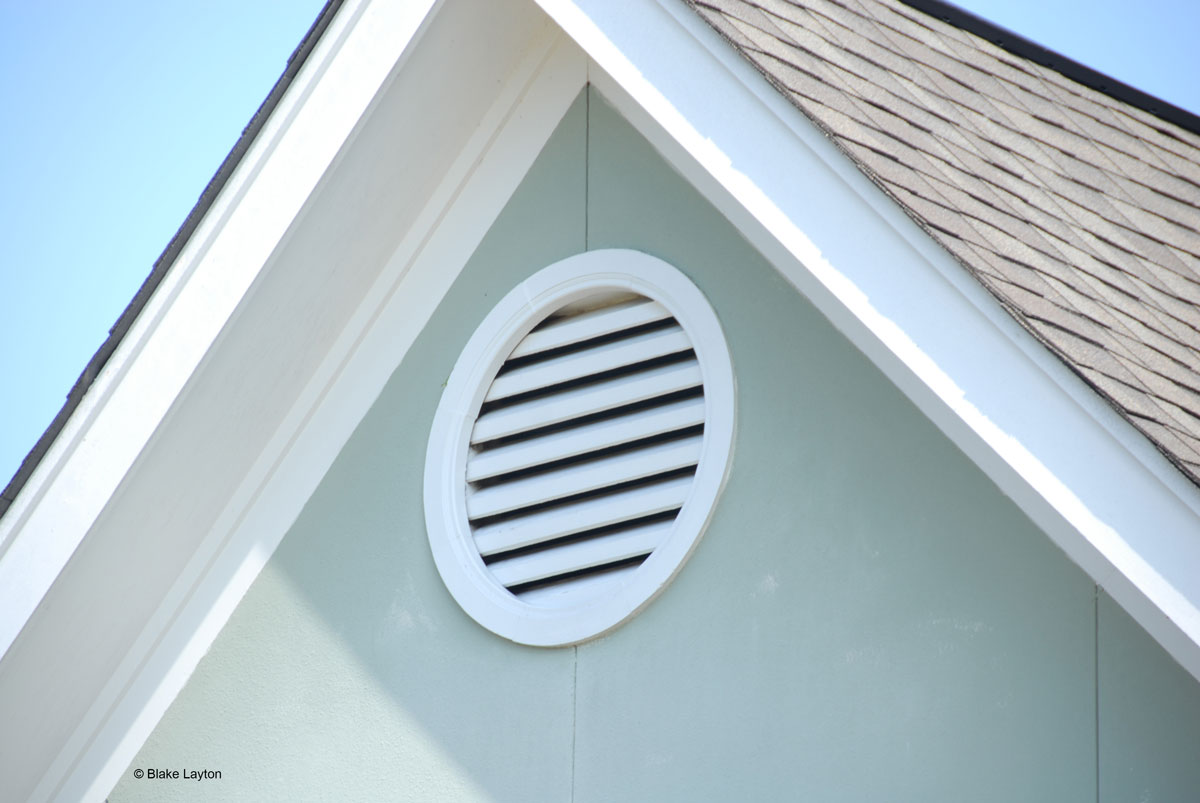Physical Insect Exclusion, Vol. 8, No. 23
Related News
April 11, 2013
April 2, 2013
March 14, 2013
February 28, 2013

If the insect screen behind this gable vent is missing or torn, the attic space, and ultimately the living area, of this house is likely to be invaded by large numbers of paper wasps and lady beetles this fall.
Physical exclusion is the most effective “treatment” for keeping unwanted insects, spiders, and other small animals from getting into homes and businesses. Although pests such as cockroaches, millipedes, ground beetles and wolf spiders are more likely to enter buildings during the warmer months of the year, there are several pests that enter buildings in the fall in search of a warm place to spend the winter. This includes paper wasps, imported Asian lady beetles, kudzu bugs, brown marmorated stink bugs, and more. Owners of buildings that are not adequately “bug-proofed” can become unwilling hosts to large numbers of such insects, and once they have gotten inside, these pests can be a vexing, recurring nuisance.
Summer and early fall is an ideal time to work on making buildings more bug-proof—before cool weather invaders like paper wasps and lady beetles start moving into building in late fall. This is also a good time to check for water leaks and moisture problems that can make buildings more susceptible to termites.
The goal of physical exclusion is to seal any holes, cracks, crevices, or other places through which pests can enter the building. How small a crack or crevice do you need to seal? If you can slip the edge of a quarter through, it is big enough for many insect pests to enter. Ants can get through even smaller cracks, but most other home-invading insect pests cannot. Tools and methods used to bug-proof buildings depend on the situation, but can include screening, door sweeps, wood molding, weather stripping, caulking, and foam sealant. Some buildings are easier to seal than others and some bug-proofing projects require a skilled carpenter, but time and money spent making a building more bug-proof is usually well spent. Such improvements can also make buildings more energy efficient.
Focus on major problems first. Missing or torn screen behind a gable vent will allow large numbers of pests to enter an attic space. Poorly screened or improperly installed soffit vents, or large cracks in the wood joints around eaves, fascia and soffits are another point of easy entry for large insects such as paper wasps and cockroaches. Cracks under or around doors or windows provide ready entry for wolf spiders, ground beetles, cockroaches, and many other pests.
For more detailed information on how to make buildings more bug-proof see the article, Physical Exclusion: The Best Treatment for Home-invading Insect Pests.
Blake Layton, Extension Entomology Specialist, Mississippi State University Extension Service.
The information given here is for educational purposes only. Always read and follow current label directions. Specific commercial products are mentioned as examples only and reference to specific products or trade names is made with the understanding that no discrimination is intended to other products that may also be suitable and appropriately labeled. Mississippi State University is an equal opportunity institution.
Bug’s Eye View is now on Facebook. Join the Bug's Eye View Facebook group here.